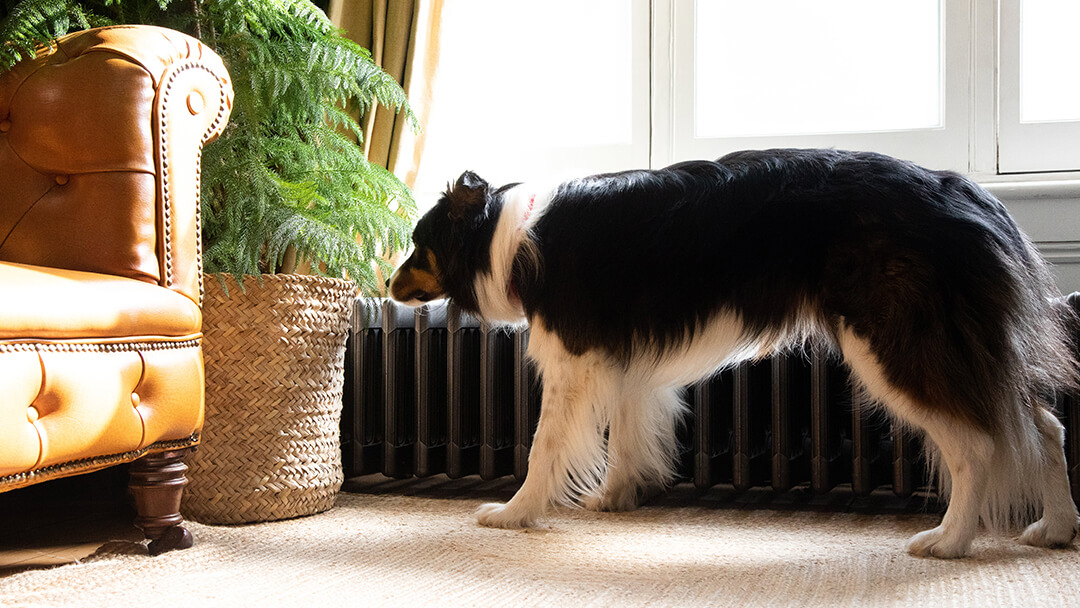
Dog pregnancy symptoms can be observed as early as two to three weeks after mating, with changes in the nipples being a standard indicator. The nipples may appear more prominent, pinker, and darker than usual, particularly those near the hind legs.
Dogs typically start showing subtle signs of pregnancy around four to five weeks after conception, although the timing may vary. It is essential to closely monitor the dog’s behavior and physical changes throughout the pregnancy to ensure proper care and preparation for the upcoming puppies.

Understanding Dog Pregnancy
Throughout dog pregnancy, symptoms evolve week by week. One of the most common signs is a change in the size and color of the dog’s nipples, typically occurring around two to three weeks after conception. This can help determine how far along a dog is in her pregnancy.
Welcoming a new litter of puppies into the world is an exciting and rewarding experience for dog owners. However, it is essential to understand dog pregnancy and its various stages to ensure the health and well-being of both the mother and the puppies. This article will explore the different aspects of dog pregnancy, from the early weeks to the preparation for labor.
What Happens In The First Few Weeks
The first few weeks of dog pregnancy are crucial as the initial changes occur. During this time, the fertilized eggs implant themselves into the uterine wall and begin to develop. While it may be challenging to detect pregnancy at this early stage, some subtle signs can give you a hint. One of the most noticeable changes is the dog’s nipples. Around two to three weeks after conception, the nipples may appear slightly more prominent, pinker, and deeper in color, especially those closest to the dog’s hind legs.
As the pregnancy progresses, other internal changes are not visible to the naked eye. The embryos continue to grow, and their organs start to form. Providing proper nutrition and care to support the developing puppies is crucial. A balanced diet recommended by a veterinarian can ensure the mother’s health and the appropriate development of the growing puppies.
Signs Of Pregnancy
After the initial weeks, you may start noticing more obvious signs of pregnancy in your dog. One of the most apparent signs is a change in her body shape. Dogs may begin to gain weight, especially around the abdomen area, as the puppies grow in size. You may also notice increased appetite and water intake as the mother’s body works hard to support the growing litter.
In addition to physical changes, behavioral changes may also occur. Pregnant dogs may become more affectionate, seeking attention and comfort from their owners. Some dogs may also display nesting behaviors, such as collecting blankets or toys in a designated area. These behaviors are signs that your dog is preparing for the upcoming labor and the arrival of the puppies.
Preparation For Labor
As the pregnancy nears its end, it is essential to prepare for the labor to ensure a safe and comfortable delivery for both the mother and the puppies. Creating a quiet and comfortable whelping area where the mother can give birth to the puppies is essential. This area should be warm, clean, and free from potential hazards.
Providing proper prenatal care is also crucial during this time. Regular checkups with a veterinarian can monitor the health of the mother and the developing puppies. The veterinarian can also guide the expected due date, signs of complications, and what to do in an emergency.
In conclusion, understanding the stages of dog pregnancy is essential for dog owners to ensure the health and well-being of both the mother and the puppies. By closely monitoring the signs and preparing for labor, you can help create a safe and comfortable environment for the new arrivals.

Week-by-week Changes
During the early stages of dog pregnancy, one of the most common signs is a change in the nipples, which may appear more prominent, pinker, and deeper in color. This change usually occurs around two to three weeks after conception. Dogs typically show subtle signs of pregnancy from about four to five weeks.
Week 1-2: Mating And Fertilization
After successful mating, fertilization occurs within the dog’s reproductive system during the first week. The female dog’s eggs are fertilized by the male’s sperm, leading to the beginning of pregnancy. Although no visible changes are apparent during these early stages, the process of pregnancy begins at this point.
Week 3-4: Visible Changes In Nipples
At around three to four weeks into pregnancy, the dog’s nipples may undergo noticeable changes. They may appear slightly more prominent, pinker, and have a deeper color than usual. This change is most apparent in the nipples closest to the dog’s hind legs. These visible changes in the nipples serve as one of the initial signs of pregnancy.
Week 5: Subtle Pregnancy Signs
By week five, some subtle signs of pregnancy may become more noticeable in the dog. These signs can vary from dog to dog but may include increased appetite, weight gain, and behavioral changes. However, it’s important to note that these signs can also be attributed to other factors, so it’s always best to consult a veterinarian for confirmation.
Week 6-7: Swollen Breasts And Colostrum
During weeks six to seven of pregnancy, the dog’s breast tissue may become swollen. The nipples may also appear more prominent and dark in color. Additionally, you may notice the presence of colostrum, a cloudy fluid that serves as the dog’s first milk. These changes indicate that the dog’s body is preparing for milk production to nourish the upcoming puppies.
Week 8: Preparing For Labor
The dog is getting ready for labor in the final week of pregnancy. Providing a comfortable and safe environment for the upcoming delivery is essential. Prepare a quiet area with blankets or a whelping box for the dog to give birth. Ensure basic supplies, such as clean towels, sterile gloves, and a heating pad, are ready for labor.
By understanding the week-by-week changes in a dog’s pregnancy, you can adequately prepare for the upcoming delivery and ensure the health and well-being of both the mother and the puppies. Monitoring any changes closely and consulting with a veterinarian throughout the pregnancy journey is crucial.
Managing A Dog’s Pregnancy
During a dog’s pregnancy, proper management is crucial to ensure the health and well-being of both the mother and the puppies. This involves taking care of their diet and nutrition, scheduling regular prenatal checkups, and preparing for the upcoming birth. Focusing on these critical aspects can help ensure your furry friend’s smooth and successful pregnancy.
Diet And Nutrition
Providing a balanced and nutritious diet is essential for a pregnant dog. Feeding her high-quality dog food specifically formulated for pregnant or lactating dogs is critical. This ensures she receives all the necessary nutrients to support her health and the developing puppies. It is recommended to consult with your veterinarian to determine the appropriate type and amount of food to feed your pregnant dog.
During the later stages of pregnancy, splitting her meals into smaller, more frequent portions is advisable to avoid overeating and indigestion. Additionally, ensure she can always access plenty of fresh water.
Prenatal Checkups
Regular veterinary checkups are crucial to monitor the progress of the pregnancy and address any potential complications. It is recommended to schedule your dog’s first prenatal checkup within the first few weeks after mating to confirm the pregnancy and establish a timeline. As your veterinarian advises, subsequent checkups should be scheduled periodically throughout the pregnancy.
During these checkups, your veterinarian may perform physical examinations, conduct ultrasound scans, and provide necessary vaccinations or parasite treatments. They will also be able to address any concerns or questions you may have regarding your dog’s pregnancy.
Preparing For The Birth
As your dog’s due date approaches, preparing a safe and comfortable birthing area for her is essential. This area should be quiet, warm, and free from any potential hazards. Provide comfortable bedding, and ensure you have an appropriate whelping box ready for her to deliver the puppies.
Gather all the necessary supplies, such as clean towels, heating pads, sterile scissors, and a puppy resuscitation kit. Familiarize yourself with the signs of the labor and delivery process to be prepared for any potential complications.
It is also a good idea to have your veterinarian’s contact information readily available in case of emergencies during the birthing process.
By managing your dog’s pregnancy through proper diet and nutrition, regular prenatal checkups, and adequate preparation for the birth, you can help ensure a healthy and successful pregnancy for your furry friend. Remember to consult your veterinarian for personalized guidance and advice throughout pregnancy.

Frequently Asked Questions For Dog Pregnancy Symptoms Week By Week Explained!
How Soon After Mating Will A Dog Show Signs Of Pregnancy?
A dog may show signs of pregnancy, such as changes in the nipples, around two to three weeks after mating. The nipples may appear more prominent, pinker, and deeper in color than usual.
How Far Along Does A Dog Have To Be Pregnant Before You Can Tell?
A change in the dog’s nipples is a common sign of pregnancy, usually visible two to three weeks after conception. The nipples may appear more prominent, pinker, and darker in color. Dogs generally start showing signs of pregnancy around four to five weeks.
What Happens In The Last Week Of A Dog’s Pregnancy?
In the last week of a dog’s pregnancy, you may notice the belly relaxing more and the vulva swelling. The dog may also have decreased activity.
What Does A 2-Week Pregnant Dog Look Like?
A dog may not show visible signs of pregnancy at two weeks pregnant. However, you may notice slight changes in her nipples, which may appear more prominent, pinker, and deeper in color.
Conclusion
Throughout dog pregnancy, various symptoms can help owners determine if their dog is expecting. From changes in their nipples to a bloated abdomen and an increase in appetite, these signs can provide valuable insights into the progression of pregnancy.
Dog owners need to be aware of these symptoms and seek veterinary care to ensure the health and well-being of their pregnant dogs. By understanding the week-by-week symptoms, owners can better prepare for the arrival of adorable new puppies.




